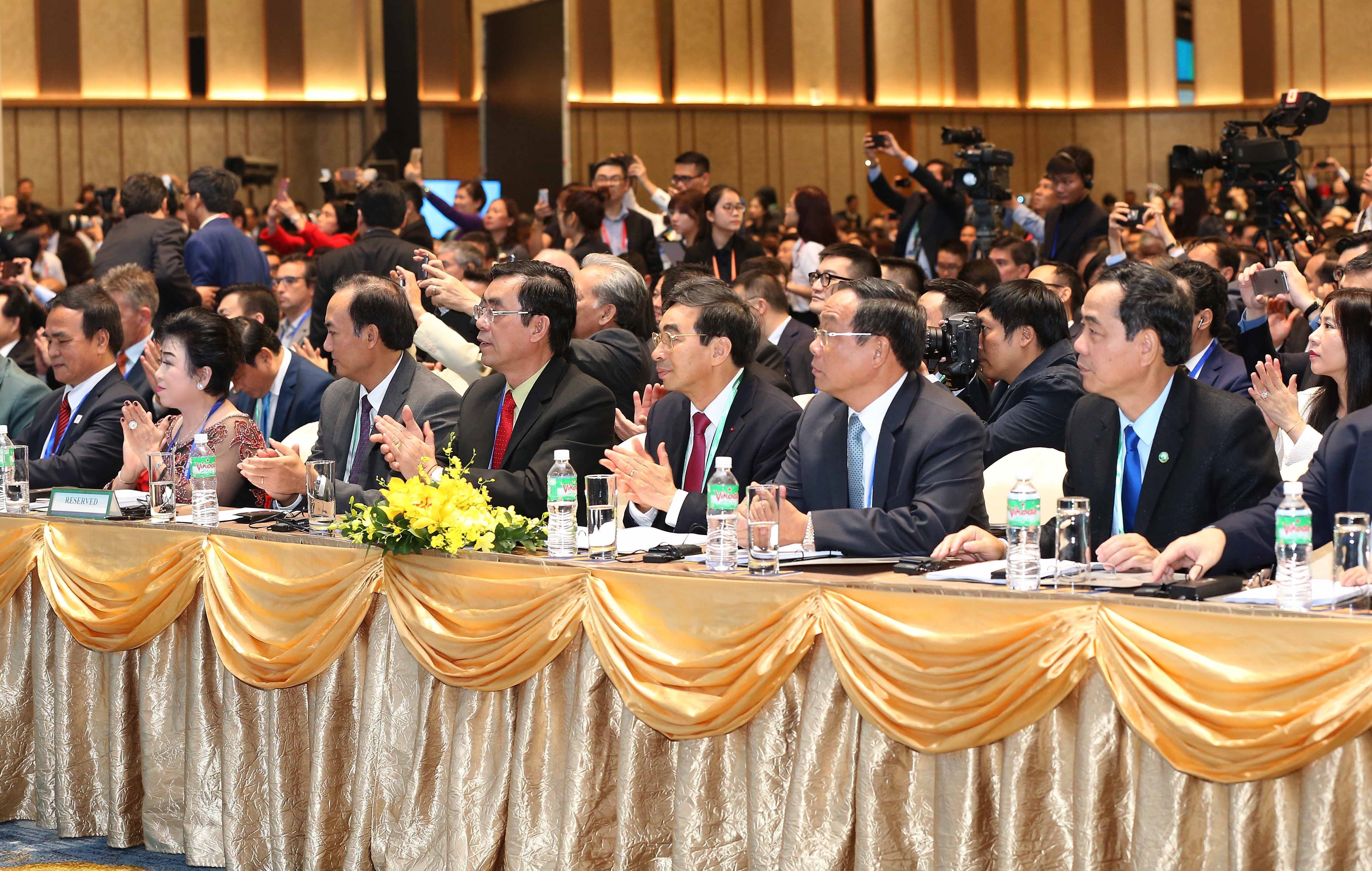PECC survey: rising protectionism is top risk to growth
 |
| The Asia-Pacific region is seeking ways for open trade and investment |
The State of the Region 2017-2018 survey found that increasing protectionism was seen as the top risk to the growth of the Asia-Pacific region. A lack of political leadership and slowdown in the Chinese economy were ranked as second and third risks to growth.
“Against the backdrop of concerns over rising protectionism, arguments for regional economic integration efforts and emphasis on pathways to achieving the Free Trade Area of the Asia-Pacific (FTAAP) and support for the multilateral trading system become even more pertinent. They provide stability, certainty, and a sense of forward momentum,” said Pacific Economic Cooperation Council (PECC) co-chair Don Campbell.
Despite the United States pulling out of the Trans-Pacific Partnership Agreement (TPP), according to the economic modeling mentioned in the report, the implementation of the TPP-11 (TPP without the US) could boost the GDP of the 11 remaining economies by 3.0 per cent.
In comparison, estimates suggest that the Regional Comprehensive Economic Partnership (RCEP) could raise the real average GDP of the participating economies by 1.9 per cent, should all import tariffs be eliminated.
However, particularly for the smaller economies in the region, the real gains will happen less through the improved access to external markets and more by reducing non-tariff measures (NTMs) and by addressing domestic regulation reforms, according to the report.
About 65 per cent of the Asia-Pacific policy community surveyed thought that RCEP would likely be completed in about two to five years. About 49 per cent thought that TPP-11 would be completed in two to five years, while 21 per cent said it would never materialise and another 21 per cent remained uncertain.
On the likelihood of the US rejoining the TPP, 20 per cent said yes, while 26 per cent said not likely. Over 51 per cent of North American respondents thought that the US would rejoin the TPP under a different name.
“FTAAP is a strategic choice for the long-term prosperity of the Asia-Pacific region. It will provide institutional guarantees for our region’s open economy. There are several pathways and initiatives underway that can effectively complement each other towards the eventual realisation of an FTAAP,” said Ambassador Tang Guoqlang, co-chair of PECC.
“In addition to the TPP and RCEP, the Belt and Road Initiative (BRI), which links the two ends of the vast Eurasian continent, will contribute to keeping up the momentum of globalisation. These regional economic integration efforts will help each economy maximise their own growth potentials, while the entire Asia-Pacific region would essentially benefit," he added.
PECC’s State of the Region 2017-2018 report was released on the sidelines of the APEC senior officials’ and ministerial meetings ahead of the summit. This report includes the results of a survey of over 700 regional policy experts on key developments and challenges that the Asia-Pacific is facing as a region. The survey panelists were selected based on their expertise and direct involvement or influence on regional policy making, hailing from governments, businesses, and the civil society.
What the stars mean:
★ Poor ★ ★ Promising ★★★ Good ★★★★ Very good ★★★★★ Exceptional
Latest News
More News
- First VBS kicked off in Danang (November 07, 2017 | 17:10)
- Ford’s continuing efforts to make Vietnam’s roads safer (November 07, 2017 | 16:08)
- Viet Nam is trying to improve itself: PM (November 07, 2017 | 15:34)
- PM delivers keynote speech at Viet Nam Business Summit (November 07, 2017 | 11:34)
- APEC Vietnam 2017 special publication now available (November 07, 2017 | 11:32)
- Four Vietnamese entrepreneurs to attend APEC CEO Summit (November 06, 2017 | 20:38)
- State President: APEC shows strong vitality and resilience despite global upheavals (November 06, 2017 | 20:24)
- Concluding Senior Officials' Meeting kicked off in Danang (November 06, 2017 | 16:34)
- Vietnam’s proposals to generate new dynamism for APEC (November 06, 2017 | 15:42)
- APEC media centre in full swing (November 06, 2017 | 15:01)















 Mobile Version
Mobile Version